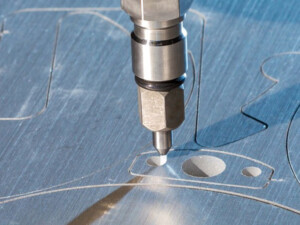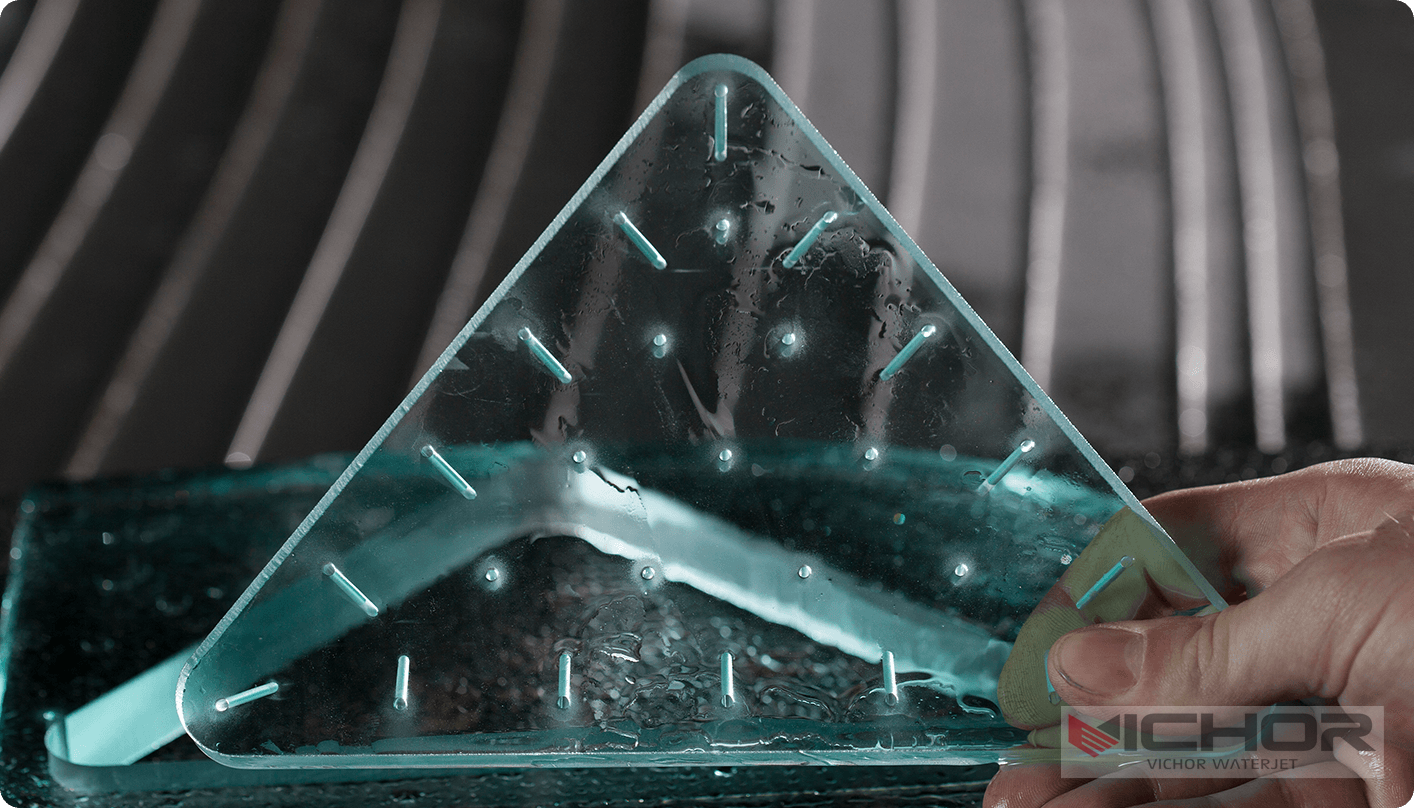
7 Things You Need to Know About a High Pressure Water Saw
In the world of modern industrial cutting and fabrication, few tools are as innovative and powerful as the high pressure water saw. This technology, which might seem like something from a science fiction novel, is a cornerstone in numerous industries, from aerospace to manufacturing. But what exactly is a high pressure water saw, and how does it work? This article delves deep into seven key aspects of this remarkable tool, explaining its operation, benefits, applications, and addressing the common questions that surround it.
Whether you’re an engineer, a project manager, or simply fascinated by advanced technology, understanding the capabilities and considerations of a high pressure water saw is crucial for evaluating its potential in your operations.
What is a High Pressure Water Saw and How Does It Work?
A high pressure water saw, often referred to more broadly as an abrasive waterjet cutter, is an industrial tool designed to cut through a vast array of materials using a supersonic stream of water mixed with abrasive particles. Unlike traditional saws that use physical blades, this system relies on the principles of erosion and immense kinetic energy.
The process begins with a high-pressure intensifier pump that pressurizes ordinary water to extreme levels, typically between 60,000 and 90,000 PSI (Pounds per Square Inch). This ultra-high-pressure water is then forced through a small orifice in a jewel (usually made of diamond or sapphire), creating a thin, coherent, and incredibly fast water jet. For cutting harder materials, a granular abrasive (like garnet) is introduced into this stream within a mixing tube. The abrasive particles accelerate in the water jet, creating a powerful erosive stream that can slice through metals, stones, composites, and glass with remarkable precision. This combination of water and abrasive is what truly defines the cutting power of a high pressure water saw.
The Diverse Applications of a High Pressure Water Saw
The versatility of the high pressure water saw is one of its greatest strengths. Its ability to cut such a wide range of materials makes it indispensable across various sectors.
Metal Fabrication: It is extensively used for cutting intricate shapes in metals like steel, aluminum, brass, and titanium. This is vital for the automotive, aerospace, and defense industries.
Stone and Tile Work: Natural stone, granite, and marble are precisely cut for countertops, monuments, and artistic inlays without causing cracks or chips.
Composite Materials: The aerospace industry relies on it to cut complex parts from carbon fiber and fiberglass composites without delaminating the layers.
Glass and Ceramics: It creates smooth, precise cuts in brittle materials for architectural features, artwork, and electronic components.
Food Industry: In a surprising application, pure waterjets (without abrasive) are used for cutting frozen foods, cakes, and pastries in large-scale food processing plants, showcasing the technology’s hygienic and cold-cutting benefits.
Key Advantages of Using a High Pressure Water Saw
Why choose a high pressure water saw over a laser, plasma, or mechanical saw? The benefits are numerous and significant.
Cold Cutting Process: The waterjet process generates very little heat, eliminating the Heat-Affected Zone (HAZ) that can alter the material’s properties, cause warping, or hardening. This is critical for materials that are sensitive to high temperatures.

Material Versatility: It can cut almost anything—from soft rubber to hardened tool steel. This eliminates the need for multiple dedicated cutting machines.
High Precision and Flexibility: Computer Numerical Control (CNC) guides the high pressure water saw, allowing for extremely precise cuts of complex shapes and patterns with tight tolerances from a digital file.
Minimal Material Waste: The thin kerf (the width of the cut) of the stream means less material is wasted, which is crucial when working with expensive metals or composites.
Environmentally Friendly: The process produces no hazardous fumes or gases. The used water and abrasive can often be separated and recycled.
Common Challenges and Limitations
Despite its impressive capabilities, the high pressure water saw is not without its challenges. Being aware of these limitations is key to successful implementation.
Cutting Speed: While excellent for thickness and complexity, it can be slower than plasma or laser cutters when cutting thin sheets of mild steel.
Operating Costs: Consumables like high-pressure pump parts, orifice jewels, mixing tubes, and abrasive garnet contribute to ongoing operational expenses.
Noise and Maintenance: The systems can be loud and require regular maintenance of the high-pressure components to ensure reliability and safety.
Taper: A slight V-shaped taper can occur on the edges of the cut, especially in thicker materials. However, this can be mitigated with advanced cutting heads and software controls.
5 Common Questions About High Pressure Water Saws Answered
Here are some of the most frequently asked questions regarding this technology.
1. How thick of a material can a high pressure water saw cut?
The cutting capacity is impressive. A standard abrasive waterjet system can effectively cut materials over 12 inches (300 mm) thick. The primary limit is not the material’s hardness but its thickness and the system’s power. Thicker cuts require slower speeds and more abrasive.
2. What is the typical accuracy and edge quality?
A well-calibrated high pressure water saw can achieve accuracies within ±0.003 inches (±0.076 mm). The edge quality can vary from a smooth finish to a rougher texture, depending on the cutting speed. Slower speeds produce smoother edges. For many applications, the cut edge is ready for use without secondary finishing.
3. Is it a safe tool to operate?
While the cutting stream itself is incredibly dangerous and requires strict safety protocols (including enclosures and safety glass), the overall process is considered very safe. There is no risk of fire or explosion, and the lack of heat prevents burns from the material itself. Proper training is, of course, essential.
4. How does it compare to laser cutting?
Laser cutting is generally faster on thin, heat-sensitive materials but cannot cut reflective materials (like copper or aluminum) as easily and creates a HAZ. The high pressure water saw has no such restrictions, handles reflective materials effortlessly, and produces no HAZ, making it better for thicker materials and heat-sensitive applications.
5. What are the main maintenance requirements?
Regular maintenance focuses on the high-pressure system. This includes inspecting and replacing seals in the intensifier pump, checking the high-pressure tubing for fatigue, and replacing the orifice and mixing tube as they wear out from the abrasive flow. A daily checklist is recommended to ensure optimal performance.
Choosing the Right System for Your Needs
Selecting a high pressure water saw involves considering several factors. The required cutting power (PSI), the size of the workbed (to accommodate your typical material sizes), and the sophistication of the CNC controller are primary concerns. You must also evaluate the availability of technical support, training, and spare parts from the equipment supplier. Understanding your primary materials and their thickness will guide you toward a system with the appropriate horsepower and pressure rating.
The Future of High Pressure Water Saw Technology
The technology behind the high pressure water saw continues to evolve. Future trends point towards even higher pump pressures for faster cutting speeds and improved energy efficiency. advancements in CNC software are making “on-the-fly” cutting head adjustments to eliminate taper and optimize cutting speed automatically. Furthermore, the development of more durable consumables and smarter, predictive maintenance systems will help reduce operating costs and increase uptime, solidifying the role of the high pressure water saw as a vital tool in advanced manufacturing.
In conclusion, the high pressure water saw is a uniquely capable and versatile cutting solution. Its cold-cutting nature, unparalleled material versatility, and high precision make it an invaluable asset for any operation that demands quality cuts without material compromise. By understanding its principles, advantages, and how to address its common challenges, businesses can leverage this powerful technology to enhance their production capabilities and innovate their product designs.
continue reading


